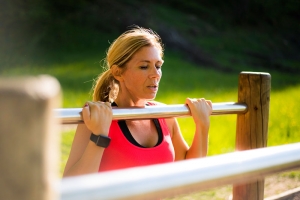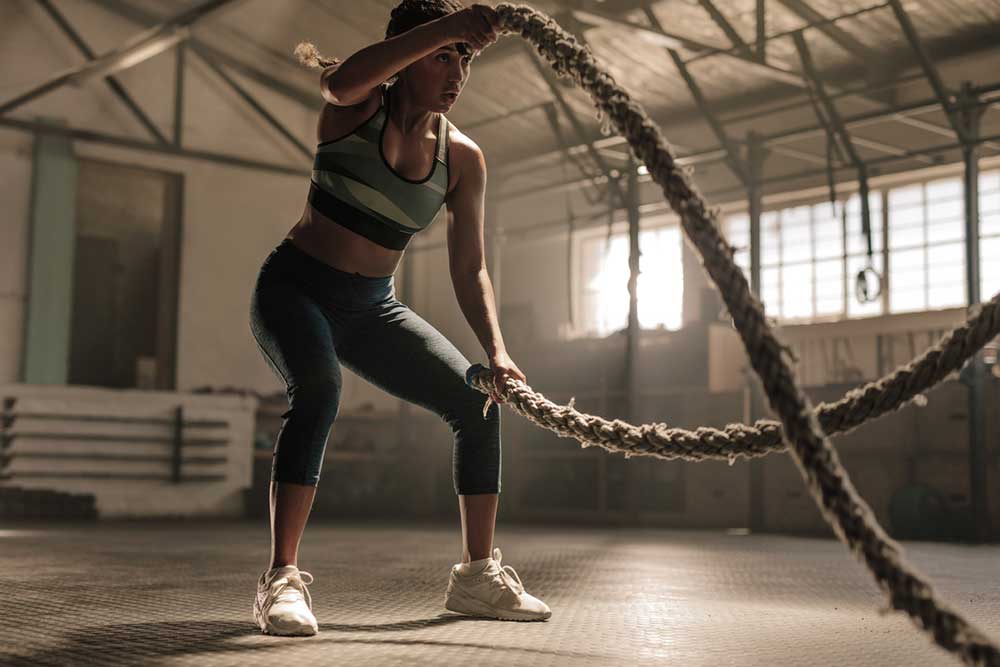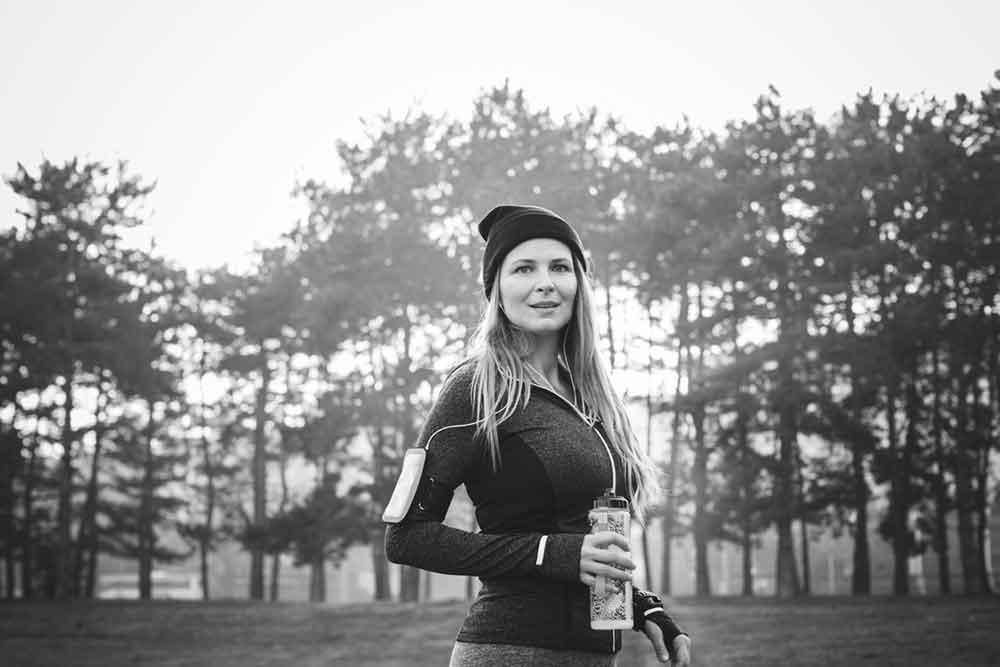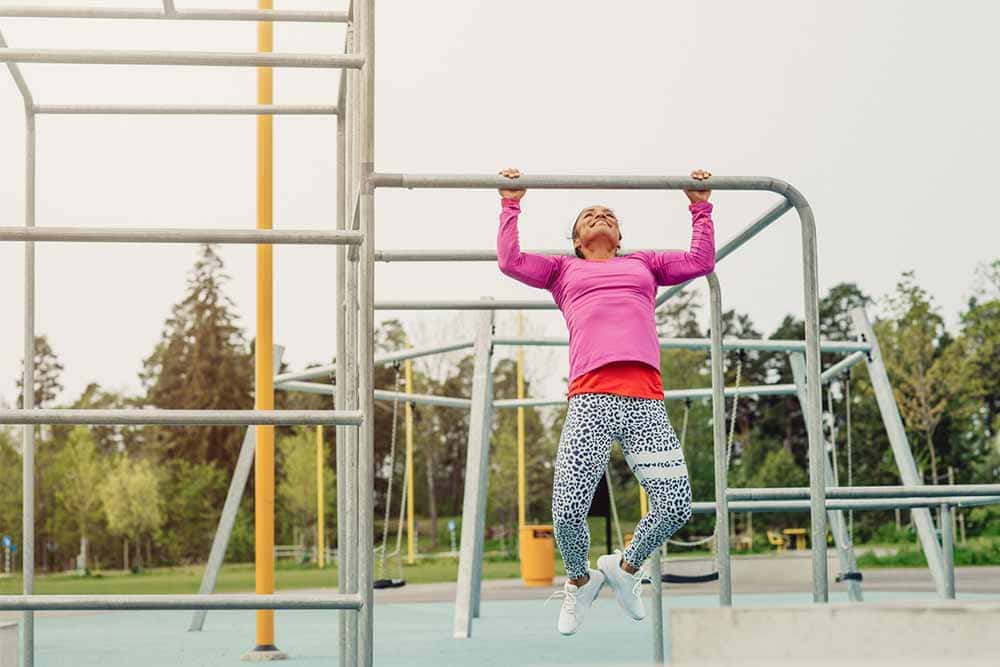Generation 100: The Biggest Clinical HIIT Trial in the World!

Fiona Callender and Sara Thompson
Sara and I arrived in Norway late in the evening and took a bus to an Airbnb just down the street from the Norwegian Institute of Science and Technology in Trondheim. We were just settling in when our hosts knocked our door and rushed us outside to see the Northern lights, green and dazzling across the sky. It was incredible. This gesture was the first of many wonderful experiences we would have on our whirlwind visit to Trondheim.
The next morning it was pouring rain as we walked down to the University to meet with Dr. Dorthe Stensvold, the lead researcher of Generation 100. Generation 100 is a major five year clinical intervention assessing the effects of exercise on morbidity and mortality in elderly people. Our timing couldn’t have been better as we arrived just in time for the start of their three year follow up testing.
Three years ago, Dr. Ulrik Wisløff and his team of researchers invited everyone in Trondheim who was born between 1936 and 1942 – around 6500 people! – to take part in their study. They sent out participation request letters that included a questionnaire about health status, physical activity and social status. They ended up including 1567 people in the study (and still received about 1500 questionnaires from those who didn’t participate in the intervention). The researchers didn’t have a huge list of exclusion criteria, however, the participants had to be able to perform the exercise as it was not possible to individualize the exercise for individual needs. Those who had previous medical conditions (such as heart disease and cancer) were included provided that their doctors gave the clearance to train.
The 1567 people were randomized into either a control group or an exercise group. The exercise group was further split into a moderate-intensity and a high-intensity exercise group. The control group was simply given oral encouragement to follow the physical activity recommendations provided by the government, as it is not ethical to tell individuals not to exercise at all. Much like Canada, the recommendations are more moderate-intensity based. In fact, the moderate-intensity exercise group attempted to mimic these recommendations. If the individuals in the control group were to actually follow these guidelines, their results would appear very similar to the moderate-intensity group. However, as there is no follow up or exercise log, it is unlikely that the control group would follow this recommendation. Those that were already active were likely to continue to be and those who were inactive were unlikely to start. The high-intensity group is really what sets this project apart from other studies. The population in Norway is quite active but very few exercise at a very high intensity.
 Both the moderate- and high-intensity exercise groups are required to come in to perform the prescribed exercise every six weeks at a spin class that the researchers offer. Other than that, they are required to train on their own. However, they also offer a group training session twice per week. This gives the participants the option of doing their twice-weekly exercise on their own or with a group. As it is a very long intervention, it’s nice that they allow this flexibility to the participants. The moderate-intensity participants perform 50 minutes of continuous exercise training at 60-70% of their maximal capacity. This is described to the participants as “talking speed”, as they should be able to chat with a friend while lasting the entire 50 minutes. The high-intensity group, on the other hand, performs four sets of four minutes up a hill and back down. These hills are performed at about 90% of their maximal capacity – there’s no chatting on those intervals!
Both the moderate- and high-intensity exercise groups are required to come in to perform the prescribed exercise every six weeks at a spin class that the researchers offer. Other than that, they are required to train on their own. However, they also offer a group training session twice per week. This gives the participants the option of doing their twice-weekly exercise on their own or with a group. As it is a very long intervention, it’s nice that they allow this flexibility to the participants. The moderate-intensity participants perform 50 minutes of continuous exercise training at 60-70% of their maximal capacity. This is described to the participants as “talking speed”, as they should be able to chat with a friend while lasting the entire 50 minutes. The high-intensity group, on the other hand, performs four sets of four minutes up a hill and back down. These hills are performed at about 90% of their maximal capacity – there’s no chatting on those intervals!
On our visit day, we actually had the privilege of traveling into the hills of Norway with Dr. Stensvold to witness the training program for both the moderate- and high-intensity groups! Even in the rain, there was an excellent turnout for the high-intensity participants who were up first. They started off with a warm-up that involved hiking from their cars to the base of the hill. They did some activation and mobility exercises and then got right to it! These individuals were incredible. Sara and I stood at the top of the hill encouraging them and taking pictures while these participants in their 70’s worked at almost maximum capacity! They started off at a moderate pace and gradually increased their effort during the first two minutes of the interval, with the last two minutes around 90% of their maximum capacity. The speed varied depending on the person and there were participants of all levels – some were walking, some were jogging and some were running with such good form and speed that we later encouraged them to consider competing in the World Masters Track and Field!
The greatest aspect of this workout is that while there were various levels and speeds, the slower participants catch up to the leaders during the 4-minute recovery period down the hill and everyone starts the next hill together! Many of the participants have had drastic improvements in performance as well. Dr. Stensvold told us a story about a few women who had either not run for a very long time or had never run. They started these intervals as walking a few years ago but now they are able to run and they love it!
The sun came out as the moderate-intensity group showed up for their hike. For this group, instead of cheering from the sidelines, we decided to join in and set off with the moderate-intensity group for a hike through the woods. It was a beautiful walk through the hills but we fell behind a few of the participants as they were far too fast for us! They took off right away and we didn’t see them until we found our way out of the woods. I guess we need to work on our fitness for the next time we visit Trondheim!
What was most amazing is that both the high- and moderate-intensity groups seemed to enjoy their workouts! In fact, most of the participants stuck around after to have a coffee and snack together. It seems that the participants enjoy not only training together but also the social aspect of getting together twice per week. They’ve formed lasting friendships through this training together.
When the participants are training on their own they use the Borg scale to judge how hard they are working. They are also required to complete an exercise log after each session including the type of exercise (spinning, walking, jogging, swimming etc.), intensity, and heart rate. Dr. Stensvold is really encouraged by the adherence so far. She explained that they are very compliant with all the aspects of the study and are different than other populations that she had worked with, specifically younger participants. In fact, less than 40 people in the first year failed to send in their exercise logs! The fact that the individuals can pick their own exercise likely helps with adherence, as the participants are choosing exercises they enjoy. In the winter, the research group offers indoor exercise classes in the gym when it is too slippery to be outside but in true Nordic fashion they also offer cross-country skiing! Changing up the type of exercise also helps as participants don’t become too bored, and this likely lends to participants continuing with the program.
When you look at the literature, there is overwhelming evidence that exercise has tremendous benefits on health and longevity. These data, however, are largely from studies looking at patterns of disease where there is less control over confounding factors. This makes it unclear whether the people who exercise more live longer because they exercise or if they exercise because they are healthy. This is why the Generation 100 group started this extensive randomized control study – to study the causal effect of exercise on morbidity and mortality. The aging population is an appropriate group to study as the global population is aging.
An interesting finding is that when they recruited, they lost those who reported very low levels of physical activity who were not interested in changing their habits, but they also failed to recruit a number of individuals who reported to exercise daily. This is likely because these individuals saw no benefit to participating if they are already fairly active. This is significant because it means that the benefits observed are not restricted to those individuals wh were already very active and healthy.
There have also been very few injuries and the safety of the study is tightly regulated. With recent analysis of the first year data, there doesn’t appear to be a difference in groups when it comes to health issues. This counteracts a huge misconception in the media – that high-intensity exercise is dangerous, especially for individuals with heart conditions. In fact, their four by four minute protocol is actually used as the prescription for cardiac rehabilitation in Trondheim! This is incredibly exciting considering we also just learned about how Peter Krustrup’s Football Fitness is used for cardiac rehabilitation in Denmark. Dr. Stensvold explained that she is sometimes met with skepticism, but it is only because these individuals haven’t been well informed about this type of exercise. There are still some individuals who should be more wary about participating in high-intensity exercise, such as individuals with unstable heart conditions. However, for the general population high intensity is crucial. There was even a recent study looking at the safety of high-intensity exercise, and how the risks associated with high-intensity exercise are virtually identical to moderate exercise.
We had a wonderful visit to Trondheim and everyone we met along the way was incredibly inviting. We were truly inspired by the training we got to be a part of up in the hills of Norway and look forward to keeping in touch with Dr. Stensvold on how the study progresses over the next couple of years!










